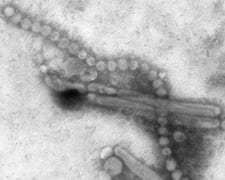Researchers have found that some indigenous groups have a specific genetic make-up that prevents them from fighting off influenza, according to a study recently published in the Journal Proceedings of the National Academy of Sciences.
“The findings suggested that there may be ethnic differences in the ability to mount an immune response to the H7N9 virus,” said Katherine Kedzierska, co-author and University of Melbourne Associate Professor.
Due to genetic differences in a protein complex involved in cell-mediated immune responses, people may vary in their ability to mount a fight against the some influenza strains.
Of particular concern is the emerging H7N9 influenza virus, which originated in birds and caused an outbreak in China in March 2013, infected more than 140 people. The flu strain resulted in a very high mortality rate of 30 per cent due to severe pneumonia and acute respiratory distress syndrome.
Professor Peter Doherty, AC, Laureate Professor and a lead author of the study, said their findings may also shed light on what happened during the catastrophic 1918-1919 influenza pandemic during which high adult mortalities (up to 100%) were reported in some isolated Alaskan villages.
“There are some populations that are at high risk from influenza disease,” Professor Doherty said.
“Similarly, as many as 10-20 per cent of Indigenous Australians died of influenza in 1919, compared to <1% mortality rate in non-Indigenous Australians. Hospitalisation and morbidity rates were also higher for Indigenous Australians,” said Doherty. “This was also the case during the recent 2009 H1N1 pandemic influenza, with 16 per cent of hospitalised Australians being Indigenous.”
“The genetic susceptibility of Indigenous Australian and Alaskans would have resulted from isolation of indigenous populations from the viruses like influenza. The indigenous populations were not subjected to evolutionary pressures caused by the viruses over the centuries.” said Associate Professor Kedzierska.
Read the study at PNAS: Complete modification of TCR specificity and repertoire selection does not perturb a CD8+ T cell immunodominance hierarchy.


